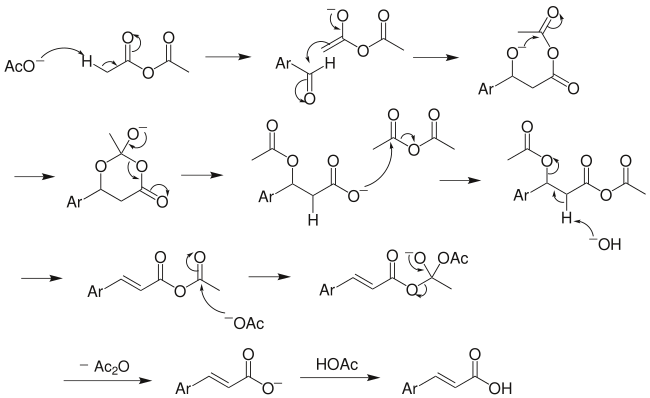Contents
| Perkin reaction | |||||||||||
|---|---|---|---|---|---|---|---|---|---|---|---|
| Named after | William Henry Perkin | ||||||||||
| Reaction type | Condensation reaction | ||||||||||
| Reaction | |||||||||||
| |||||||||||
| Identifiers | |||||||||||
| RSC ontology ID | RXNO:0000003 | ||||||||||
| | |||||||||||
The Perkin reaction is an organic reaction developed by English chemist William Henry Perkin in 1868 that is used to make cinnamic acids. It gives an α,β-unsaturated aromatic acid or α-substituted β-aryl acrylic acid by the aldol condensation of an aromatic aldehyde and an acid anhydride, in the presence of an alkali salt of the acid. [1] [2] The alkali salt acts as a base catalyst, and other bases can be used instead. [3]

